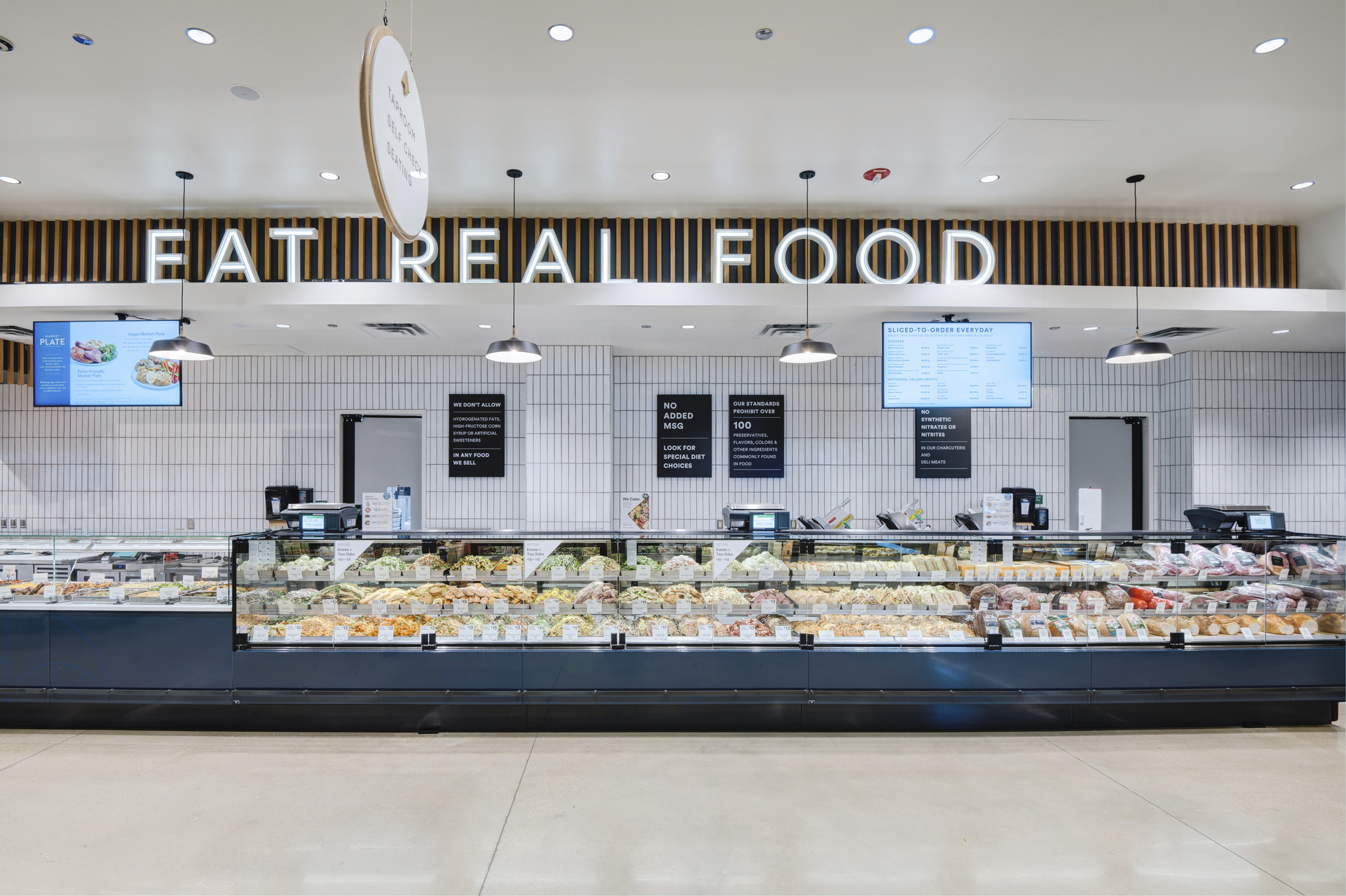Sustainable Grocery Retail Design
Grocery retail stores tend to have high energy consumption due to the size of their footprint, their refrigeration systems, and their kitchen equipment. As the cost of energy use rises, considering sustainable design solutions is beneficial for the owner’s wallet, the environment, and the messaging to customers.
Sustainable Upgrades in Design
The first grocery store system to consider is refrigeration as it accounts for almost half of the energy consumption. Transcritical CO2 refrigeration has been available in the U.S. for about the last decade, but has seen a surge in use over the last few years. As demand for this natural refrigerant rises, cost of the system has dropped, and equipment availability has increased. It is a more efficient system and can also be used for heat reclaim.
Refrigerants are given a global warming potential (GWP) number that indicates their effect on the climate.
- CO2, also referred to as R744 as a refrigerant, has a GWP value of 1.
- A common refrigerant used today is R-22 which has a 100-year GWP of 1,810
- Making the decision to move away from a common refrigerant like R-22 will result in a system having 1,800 times less impact to global warming
Small changes like providing doors for the reach-in and bunker cases will reduce the overall refrigeration load. This reduces excess cooling for these cases, and results in better ambient air temperature for consumers when walking by these cases.

The next area of the store to focus on is electrifying the building equipment. Electrifying the prepared foods kitchen and moving away from fossil fuel demand will reduce the store’s carbon footprint. Electric HVAC systems can also be sourced instead of using natural gas models. Although not all electricity provided at this point is sourced sustainably, utility grids are moving in that direction, and many have sustainable energy programs.
Finally, looking at lighting and HVAC systems and optimizing them can have a big impact. One low-cost change that can be made in existing stores, is changing to LED lighting that is motion sensor activated. This reduces the energy consumptions and when paired with skylights can still produce an inviting store experience.
Technology & Energy Production
After evaluating the basic grocery store systems, additional technology can be incorporated to further reduce energy demand. Radiant systems can be incorporated as a more efficient way to heat the store, and passive cooling techniques can be used to dissipate heat in the summer months. An example of this would be operable skylights and screened windows. Geothermal systems, which work with earth wells to maintain a sustained temperature throughout the year, offer a viable means to on-site sustainable energy generation, but requires significant upfront costs.
After all the systems have been evaluated, clients should look at energy production. Some states are mandating this be included, and this will likely become more common as states evaluate energy demand. There are currently multiple ways to include solar harvesting in your project. Photovoltaic panels can be added to the roof, mounted on top of parking lot shading canopies, or floated in a retention pond. Exciting new products like photovoltiac window mullions and architecturally designed panels can also be incorporated on the façade. Wind harvesting is another option, although typically the benefits are less significant on a retail site due to their size requirements. If onsite energy harvesting is not feasible, offset credits can be purchased to make up for the energy usage.
Rethinking Grocery
Once all the upgrades and systems have been evaluated, additional impact can be made by analyzing the store operations.
Small ways to improve the sustainability of the store could include:
- Providing sustainable offerings
- Reducing packaging waste
- Using paper bags
- Composting
- Recycling
- Providing food for the community
If you are interested in designing a grocery store, and would like to understand what sustainability features you’re able to incorporate, we are here to help. Please contact us so we can continue the conversation.




